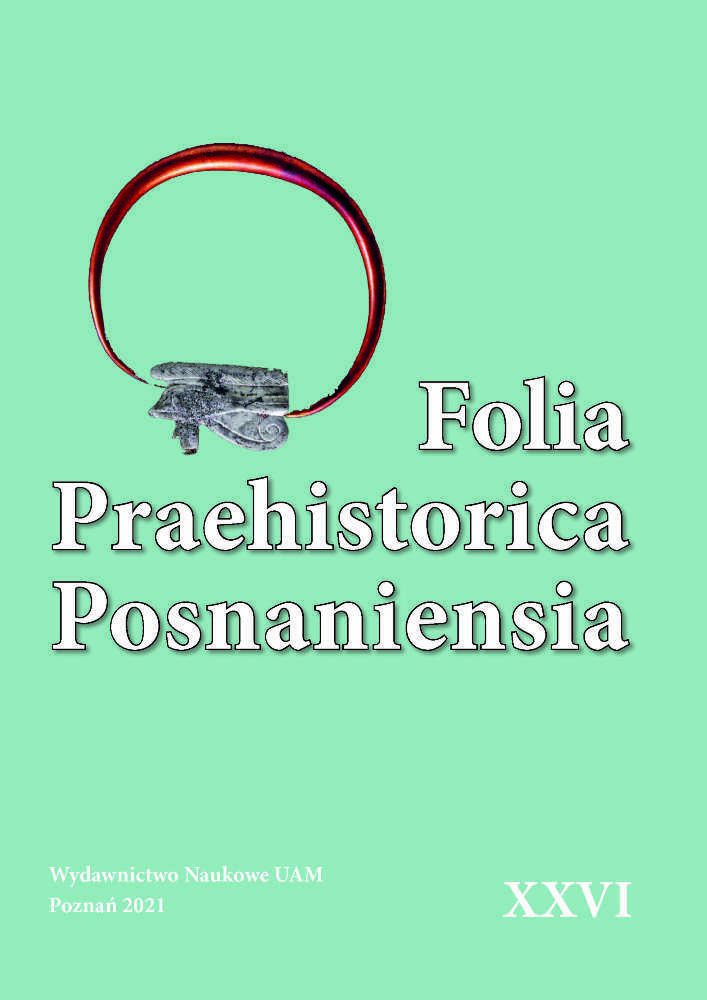Abstrakt
There has been a debate regarding substances that cause altered states of consciousness (especially those of a psychedelic nature) that have been intrinsically linked to man since the dawn of time. The question of the beginning of the crystallization of human consciousness intrigues today’s researchers. American writer and ethnobotanist Terence McKenna tangled with such ideas, indeed one of his thoughts contributes to many controversial opinions and theories presented in this work. The stoned ape theory considers psilocybin, the active substance of entheogenic mushrooms, as an element that played an important role in the process of human evolution and contributed to the acceleration of human consciousness. The author of a title theory believes that psychoactive mushrooms, which might have been components of our ancestors’ diet, could also contributed to the development of language and religion. In this paper, an attempt will be made to subject the title theory to criticism with particular discussion of archaeological evidence.
Bibliografia
Akers, B. P., Ruiz, J. F., Piper, A., Ruck, C. A. P., 2011, A Prehistoric Mural in Spain Depicting Neurotropic Psilocybe Mushrooms? Economic Botany, 10, 121–128.
Allen, J. W., Arthur, J., 2013, Etnomykologia a występowanie grzybów psylocybinowych. W: R. Metzner, D. C. Darling (red.), Teonanácatl. Święte grzyby (s. 55–70). Warszawa: Okultura.
Badham, E. R., 1983, Ethnobotany of Psilocybin Mushrooms, Especially Psilocybe Cubensis. Journal of Ethnopharmacology, 10, 249–254.
Bland, R. L., 2010, Another Look at the Pegtymel’ Petroglyphs. Arctic Anthropology, 47(2), 22–31.
Błaszczyk, D., 2003, Kiedy piwo było święte: opowieść o piciu i paleniu w pradziejach. W: Ł. Olędzki (red.), Wiara, pamięć, archeologia (s. 21–36). Poznań: Koło Naukowe Studentów Archeologii przy Instytucie Prahistorii Uniwersytetu im. Adama Mickiewicza.
Dikov, N. N., 1971, Mysteries in the Rocks of Ancient Chukotka. Moskwa: Nauka.
Dydak, K., Śliwińska-Mossoń, M., Milnerowicz, H., 2016, Psylocybina jako alternatywny lek dla osób cierpiących na depresję. Psychiatria i Psychologia Kliniczna, 16(3), 165–170.
Gimbutas, M., 2007, The Goddesses and Gods of Old Europe: Myths and Cult Images. Berkeley: University of California Press.
Guzmán, G., 2003, Fungi in the Maya Culture: Past, Present and Future. W: A. Gomez-Pompa, M. F. Allen, S. L. Fedick, J. J. Jimenez-Osornio (red.), The Lowland Maya Area. Three Millennia at the Human-Wildland Interface (s. 315–325). Nowy Jork – Londyn – Oksford.
Higham, C. F. W., Higham, T. F. G., Douka, K., 2014, The Chronology and Status of Non Nak Tha, Northeast Thailand. Journal of Indo-Pacific Archaeology, 34, 61–75.
Hublin, J. i in., 2017, New fossils from Jebel Irhoud, Morocco and the pan-African origin of Homo sapiens. Nature, 546, 289–292.
Letcher, A., 2006, Shroom: A Cultural History of the Magic Mushroom. Londyn: Faber and Faber.
Lorenc, M., 2019, Czy psychodeliki uratują świat? Warszawa: Wydawnictwo Krytyki Politycznej.
McKenna, D. J., Callaway, J. C., Grob, C. S., 1988, The Scientific Investigation of Ayahuasca. A Review of Past and Current Research. The Heffter Review of Psychedelic Research, 1, 65–76.
McKenna, T., 1988, Hallucinogenic Mushrooms and Evolution. ReVision: The Journal of Consciousness and Change, 10(4), 51–57.
McKenna, T., 2007, Pokarm Bogów. Warszawa: Okultura.
Metzner, R., Darling, D. C., 2013, Teonanácatl. Święte grzyby. Warszawa: Okultura.
Metzner, R., 2013, Wprowadzenie. Amerykańskie grzyby wywołujące wizje. W: R. Metzner, D. C. Darling (red.), Teonanácatl. Święte grzyby (s. 11–51). Warszawa: Okultura.
Nowak, S., 2015, Doświadczenie psychodeliczne jako doświadczenie poznawcze. Internetowy Magazyn Filozoficzny HYBRIS, 30, 94–112.
Olszewski, B., 2016, Kulturowe aspekty stosowania enteogenów w czasach przedhistorycznych i współcześnie. W: J. Żychlińska, A. Głowacka-Penczyńska, A. Klonder (red.), Jedzą, piją, lulki palą. Używki w świetle źródeł archeologicznych i historycznych (s. 19–28). Bydgoszcz: Wydawnictwo Uniwersytetu Kazimierza Wielkiego.
Pahnke, W. N., 1963, Drugs and Mysticism. An Analysis of the Relationship between Psychedelic Drugs and the Mystical Consciousness. Cambridge: Harvard University.
Petri, G. i in., 2014, Homological scaffolds of brain functional networks. Journal of the Royal Society Interface, 11.
Power, R. C. i in., 2015, Microremains from El Mir´on Cave human dental calculus suggest a mixed plant-animal subsistence economy during the Magdalenian in Northern Iberia. Journal of Archaeological Science, 60, 39–46.
Samorini, G., 1992, The Oldest Representations of Hallucinogenic Mushrooms in the World (Sahara Desert, 9000–7000 B.P.). Integration: Journal for Mind-Moving Plants and Kultur, 2(3), 69–78.
Samorini, G., 2001, Funghi allucinogeni. Studi Etnomicologici. Dozza: Telesterion.
Samorini, G., 2019, The Oldest Archeological Data Evidencing the Relationship of Homo Sapiens with Psychoactive Plants: A Worldwide Overview. Journal of Psychedelic Studies, 3, 1–18.
Sayin, Ü. H., 2014, Does the Nervous System Have an Intrinsic Archaic Language? Entoptic Images and Phosphenes. NeuroQuantology, 3, 427–445.
Sessa, B., 2019, Renesans Psychodeliczny. Warszawa: Okultura.
Skok, Z., 2006, Słowiańska moc, czyli o niezwykłym wkroczeniu naszych przodków na europejską arenę. Warszawa: Wydawnictwo ISKRY.
Soleilhavoup, F., 2007, L’Art mysterieux des Tetes Rondes au Sahara. Dijon: Editions Faton.
Soukopova, J., 2012, Round Heads: The Earliest Rock Paintings in the Sahara. Newcastle upon Tyne: Cambridge Scholars Publishing.
Studerus, E., Kometer, M., Hasler, F., Vollenweider, F. X., 2011, Acute, subacute and long-term subjective effects of psilocybin in healthy humans: A pooled analysis of experimental studies. Journal of Psychopharmacology, 25(11).
Such, J., Szcześniak, M., 2000, Filozofia nauki. Poznań: Wydawnictwo Naukowe UAM.
Szelegieniec, J. H., Nowak, S. S., 2016, Święte i magiczne – pradawne i obecne gatunki grzybów halucynogennych zawierających psylocybinę i jej pochodne. Medicina Internacia Revuo, 27(106), 40–46.
Lewis-Williams, D., Dowson, T., 1988, The Signs of all Time. Entoptic Phenomena in Upper Palaeolithic. Current Anthropology, 29(2), 201–245.
Lewis-Williams, D., Dowson, T., 1989, Images of Power: Understanding Bushman Art. Johannesburg: Southern Book Publishers.
Źródła cyfrowe:
Rozmowa Joe Rogana z mykologiem Paulem Stametsem, podcast [https://www.youtube.com/watch?v=mPqWstVnRjQ&t=107s].
Rozmowa Damiana Sobczyka z Maciejem Lorencem, „Czy psychodeliki usprawniają życie?” [https://www.cda.pl/video/381813134/vfilm].
